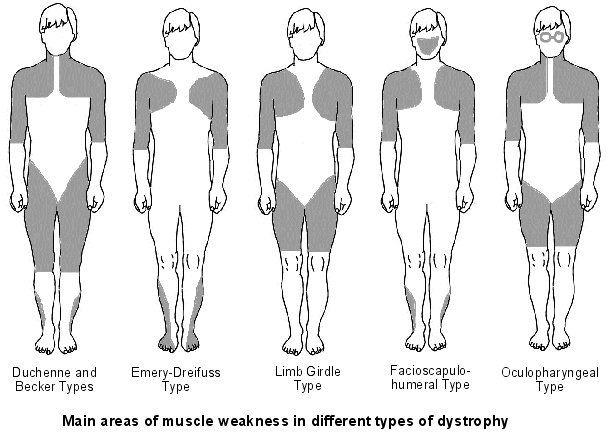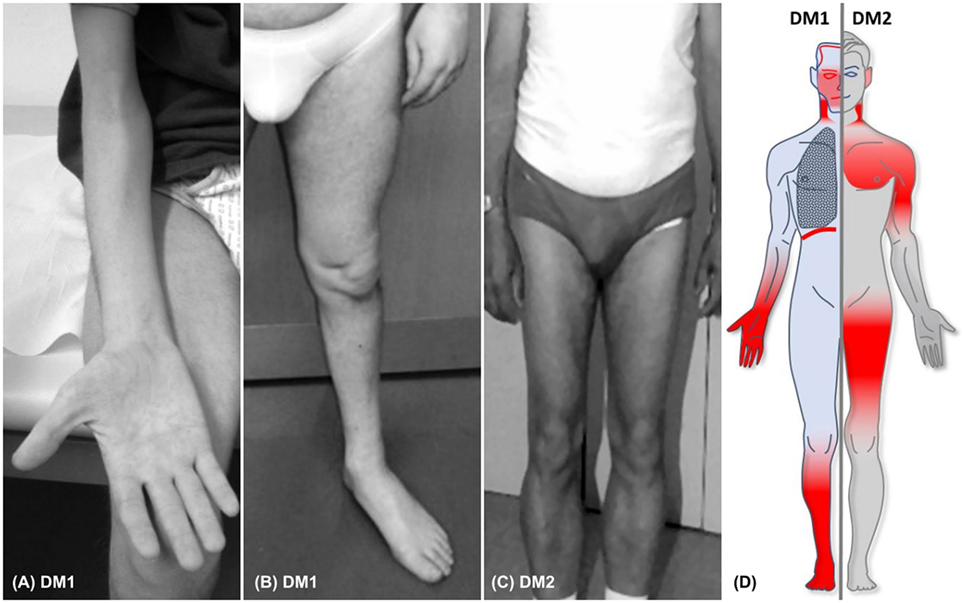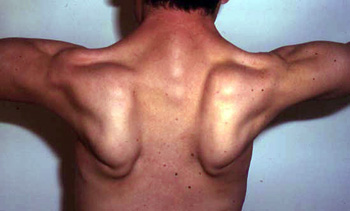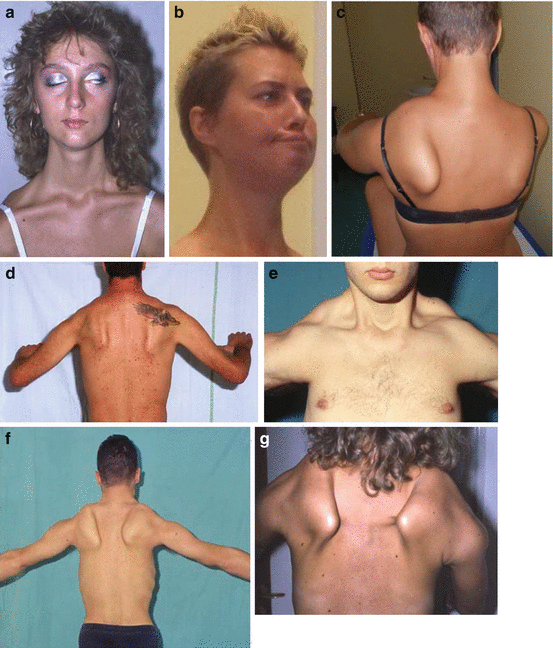Physiotherapy Neurology Muscles Genetic
Genetic
Muscles
Myotonia conjenita
- Thowsen Disease (from birth)
- Becker Myotonia (from 4-6 yo)
Muscular dystrophy
- Duchenne muscle dystrophy
- Myotonic dystrophy
- Becker muscular dystrophy
- Limb girdle muscular dystrophy
- Facioscapulohumeral muscle dystrophy
Myotonia conjenita
Genetic Disorder of skeletal muscles charactarised by delayed relaxation (myotonia) and rigidity
- Thowsen Disease (from birth)
- Becker Myotonia (from 4-6 yo)
Epidemiology
In northern Scandinavia, Fino-Ugor Russia the prevalence of myotonia congenita has been estimated at 1:10,000.
Myotonia congenita is estimated to affect 1 in 100,000 people worldwide.
Temperature
Many patients report that temperature may affect the severity of symptoms, especially cold as being an aggravating factor.
The warm-up phenomenon
This phenomenon was described along with the disease by Thomsen in 1876 but its etiology remains unclear.
Patients report that myotonia congenita may present itself in the following ways (this is from first hand experience). If the person is sedentary and then decides to walk up a set of stairs, by the third or fourth step their leg muscles begin to stiffen significantly, requiring them to slow down almost to a complete stop. But as the muscles loosen up, a few steps later, they can once again begin to climb the steps at a normal pace. If this person plays any kind of a sport, a good warm-up is mandatory. Otherwise if they need to quickly and intensively use their muscles, such as in a sprint race or a basketball game, their muscles will freeze up, causing them to slow down or almost come to a complete stop. But once the muscles are warmed up, they can once again function normally. This can happen in various muscles, even in muscles such as the tongue. For example, if a person has not spoken for awhile and then wants to speak, their tongue may be stiff at first causing the words to come out a little garbled, but after a few seconds of trying to speak, the tongue muscle will loosen up and then they can speak normally for the remainder of the time that they are conversing.
A so-called Finnish heritage disease, congenital myotonia is more common in Finland and among ethnic Finns.

Muscular Dystrophies

Duchenne MD
Most common Muscullar dystrophy affecting boys. Onset at 4, starts at thigh following by arms. At 12 y o no walking. Life expectancy 26 y



Myotonic Dystrophy
subtype of muscular dystrophy. Genetic disorder causing breakdown of skeletal muscles
Muscles often contract and anable to relax
Other Signs – cataract, heart problems, intelectual, in boys early balding and infertility
Two types DM1 and DM2


Becker Muscular Dystrophy
Similar to Duchenne MD
Onset at around age 7 to 8 years of age shows more cardiac involvement and trouble climbing stairs by age 20, if onset is around age 12, there is less cardiac involvement.



Limb Girdle Muscular Dystrophy
It is characterised by progressive muscle wasting which affects predominantly hip and shoulder muscles.



Facioscapulohumeral muscular dystrophy (FSHD)
is a type of muscular dystrophy that preferentially weakens the skeletal muscles of the face (Latin: facio), those that position the scapula (scapulo), and those in the upper arm, overlying the humerus bone (humeral). Weakness usually develops in other areas of the body as well, such as the abdomen and next to the shin, causing foot drop. Often weakness develops on one side of the body before the other. Symptoms typically begin in early childhood and become noticeable in the teenage years, with 95% of affected individuals manifesting disease by age 20 years.

